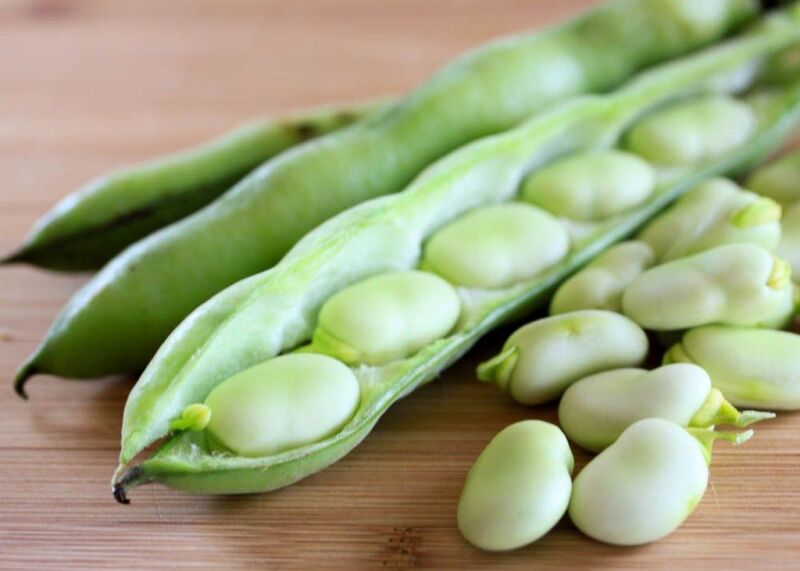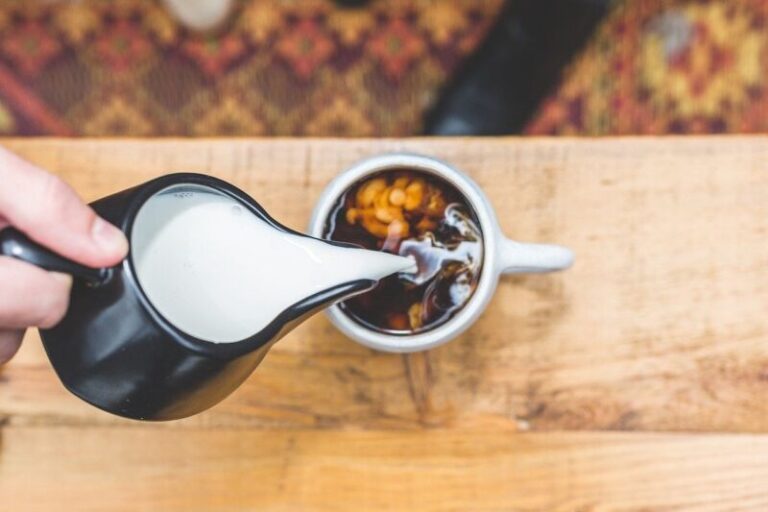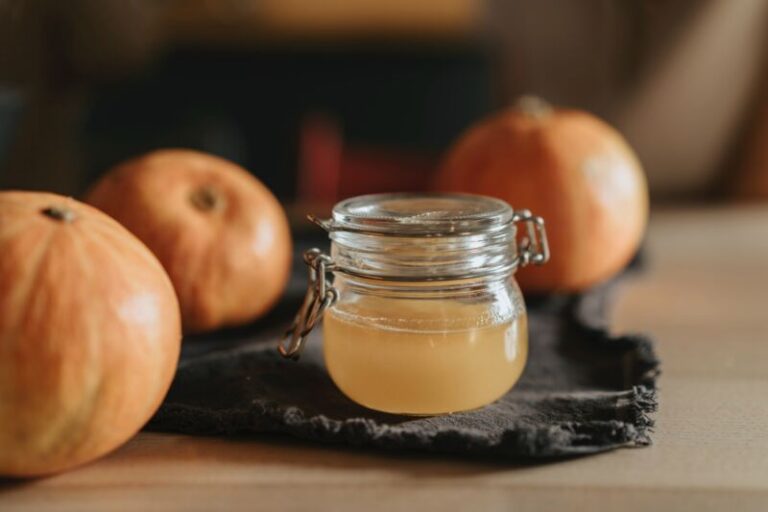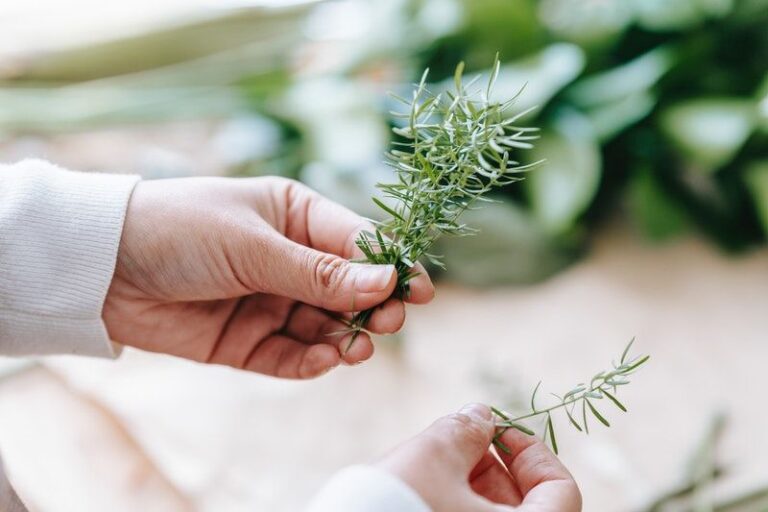The 7 Best Substitutes for Fava Beans
Fava beans are a creative and nutritious addition to many recipes. Their creamy texture and slightly nutty flavor make them quite versatile in the kitchen. However, fava beans can be difficult to find depending on where you live. I often have a hard time finding fava beans at my local grocery stores.
When a recipe calls for fava beans and I don’t have any on hand, I need a solid substitute that can stand in for the unique qualities of this ingredient. Through trial and error in my kitchen, I’ve discovered several worthy fava bean substitutes that offer similar texture, flavor, and nutrition. Keep reading for my compilation of the 7 best substitutes for fava beans.
What is a Fava Bean?
Before diving into fava bean substitutes, let’s take a moment to understand what exactly fava beans are and why cooks seek them out.
Fava beans, also known as broad beans, are a large bean classified as a legume. They grow in long, leathery pods that must be removed to reveal the bean inside. Fava beans have a distinct oval shape and come in a range of colors from green to brown to black.
The texture of fava beans is creamy and smooth, especially when cooked. Their flavor is often described as earthy and nutty, providing a savory depth to dishes. When raw, fava beans are more firm and starchy. Cooking softens their texture and brings out their flavor.
Fava beans deliver ample nutrition in the form of protein, fiber, and micronutrients. One cup of cooked fava beans contains:
- 12 grams protein
- 9 grams fiber
- 6 milligrams iron (33% daily value)
- 90 micrograms folate (23% DV)
- 216 milligrams potassium (6% DV)
They also provide thiamin, magnesium, phosphorus, zinc, and vitamins C, K, and B6.
Cooks use fava beans in a variety of dishes spanning appetizers, mains, sides, and more:
- Soups – Pureed into creamy bases or added whole as a hearty addition
- Stews – Braised along with meat, vegetables, and seasonings
- Salads – Paired with leafy greens, fresh herbs, and tangy vinaigrettes
- Sides – Sautéed with olive oil, garlic, and herbs
- Dips – Blended into hummus, bean dips, or guacamole
- Garnishes – Sprinkled over grain bowls, tacos, pasta, and pizza
With their versatile flavor and texture, fava beans can complement both savory and slightly sweet preparations.
Some people may experience allergic reactions to fava beans resulting in symptoms like rash, nausea, headache, and shortness of breath. Reactions are often caused by deficiencies in glucose-6-phosphate dehydrogenase (G6PD), making people more sensitive to compounds in fava beans. Those with legume allergies may also react to fava beans.
Now that we’ve covered the basics of fava beans, let’s look at how to prepare them before diving into the best substitutes.
How to Prepare Fava Beans
Working with fava beans takes a bit more effort than other beans since they have an outer skin that needs removal. Here are the steps:
Step 1: Remove the Shells
Fava beans grow within a thick inedible pod that must be removed to get to the beans inside. Once shelled, you should have a pile of large oval beans each wrapped in a thin translucent skin.
Step 2: Boil in Salted Water
Place the shelled fava beans in boiling salted water for 5-7 minutes to cook them until just tender. Be careful not to overcook them into mush.
Step 3: Shock in Ice Water
Drain the cooked beans and immediately submerge them in ice water. This halts the cooking process and helps retain the bright green color.
Step 4: Peel the Skins
Drain the beans from the ice bath and pinch to slip off the thin peel covering each bean. Now they are ready to use in recipes!
Popular ways to use prepared fava beans include adding them to pasta, salads, soups, and dips. Their creamy texture makes a great addition to spreads and sauces as well.
With the basics of fava beans covered, let’s explore some stellar substitutes.
The 7 Best Substitutes for Fava Beans
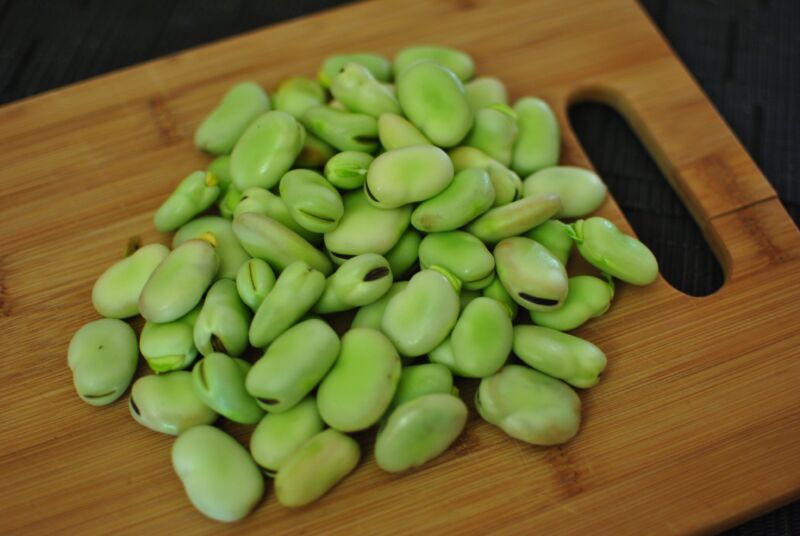
When a recipe calls for fava beans but I don’t have them on hand, I turn to several excellent substitutes that mimic the texture and flavor. Here are my top recommendations:
1. Cannellini Beans
Cannellini beans offer a similar creaminess to fava beans and have a mild flavor perfect for soaking up other ingredients. Their low fat content and high fiber make them a nutritious choice. Cannellini beans work well in nearly any dish from soups to salads to sides. Their versatility makes them a handy fava bean replacement.
2. Lima Beans
Like fava beans, lima beans offer a boost of plant-based protein and iron. They have a slightly earthier flavor and creamier texture compared to fava beans. While not as commonly used in recipes, lima beans can be found in the frozen section of most grocery stores. They work especially well blended into dips and spreads as a substitute.
3. Garbanzo Beans / Chickpeas
Garbanzo beans, also known as chickpeas, provide a similar nutty flavor to fava beans. They contain plenty of fiber and protein. Garbanzo beans work beautifully in Mediterranean recipes like salads, soups, stews, and classic hummus. They are suitable for vegetarian, vegan, and gluten-free diets.
4. Green Peas
Sweet green peas offer versatility as a fava bean substitute. They have a slightly more mild taste but a similar texture once cooked. The convenience of keeping bags of frozen peas makes this swap easy. Peas work well in soups, pasta dishes, sautés, and more in place of fava beans.
5. Kidney Beans
The larger size of kidney beans compared to other varieties makes them similar to fava beans. They have a mild taste that won’t compete with other ingredients. Kidney beans contain plenty of fiber and protein to make a filling addition to vegetarian dishes like chili, stews, and tacos.
6. Sugar Snap Peas
For another fresh pea option, look for sugar snap peas as a fava bean substitute. The crisp, sweet taste of sugar snaps contrasts nicely with rich, savory ingredients. Unlike fava beans, sugar snap peas require no peeling or soaking – just a quick rinse and they’re ready for recipes.
7. Edamame Beans
Finally, edamame beans make an excellent swap for fava beans, mimicking their texture and mild, nutty flavor. Find them fresh or frozen to add to soups, salads, stir fries, and grain bowls. Edamame works nicely in Asian-inspired dishes in place of fava beans.
Now that you know the basics of fava beans and my top substitute recommendations, let’s cover a few frequently asked questions.
FAQs
Are fava beans gluten-free?
Yes, fava beans are naturally gluten-free. This makes them a good choice for gluten-free diets as long as you avoid any products with gluten-containing additives.
What’s the difference between fresh and dried fava beans?
Fresh fava beans have a bright green color and need to be shelled and peeled before cooking. Dried fava beans can be used without soaking but will take longer to cook. Dried beans have a more concentrated flavor. Choose based on texture and convenience.
Summary of the Best Fava Bean Substitutes
In summary, here are my top recommendations for substituting fava beans:
- Cannellini beans – Mild flavor and creamy texture
- Lima beans – Similar creaminess with earthier taste
- Garbanzo beans – Nutty flavor suitable for Mediterranean dishes
- Green peas – Sweet flavor and convenient frozen option
- Kidney beans – Large size and mild taste
- Sugar snap peas – Crisp, fresh taste needs no peeling
- Edamame – Mimics texture and nutty flavor
Don’t be afraid to get creative in the kitchen when you can’t find fava beans. With the variety of substitutes available, from other beans to peas, you’re sure to find an option that works beautifully in your recipe. I encourage you to experiment with these alternatives to experience new flavors and textures.
